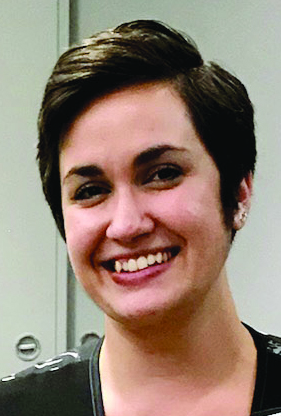The students studying journalism at Texas A&M University could have a valuable tool hampered by that school’s administration.
Taking away the print product produced by The Battalion’s staff by TAMU Pres. M. Katherine Banks, who at her own admission didn’t get why a paper newspaper matters, seems shortsighted.
“I’m not a professor of journalism; I don’t understand exactly why [print media] is important to the field,” The Battalion quoted Banks saying.
None of the journalism professors who work with the paper were asked for their input, according to the staff report.
Why ask an expert you trust to teach your students for their thoughts before making a sweeping announcement that you’re altering a paper that’s over 100 years old?
When I got to the University of North Texas, I had big plans for my future in journalism.
I was going to double-major in journalism and international studies and a minor in Spanish with the intention of becoming a foreign correspondent.
War had been in the news since Sept. 11, 2001. I graduated from high school in May 2007.
My history and language courses were filled with lessons about the difficulties people in third-world countries faced.
Plus, I wanted to do something that made a big impact on the world.
When I got to UNT, the way I wanted to immerse myself in the journalism world was to work for the North Texas Daily.
My professors helped us understand the value and impact our reporting could have when done well.
I got to practice my skills at news reporting, leadership, opinion writing, copy editing and various other aspects of working at a newspaper.
My work there helped me land an internship at the Dallas Morning News and led directly to the work I did with the Community Impact Newspaper after I graduated.
I’m grateful life took a turn from my aspirations of being a foreign correspondent to working for this local newspaper with a young family, but the work I do is still important. Without the practical experience I got at the Daily, I would have been lost in the transition to the work force.
The Daily was a laboratory with real accountability for any mistakes I or my fellow journalists made.
It was also a place where we as student journalists worked next to professional journalists, both still in the field and on the college’s staff.
Those professors would mercilessly tear apart our work with literal red marks coating the printed page, telling us how we could improve.
I still remember many of those comments as well as the tiny drawings in the white space that we left bare.
If such a major change is going to happen to a university newspaper, it should be done with the input and direction of the stakeholders who understand the stakes.
On Wednesday, Banks indicated that she might be changing her mind, in large part to the response to her decision.
“I care deeply about journalism at Texas A&M,” she said to The Battalion. “The reaction to this plan makes it clear that I should seek additional community feedback on the role of The Battalion and the rebuilt Department of Journalism, while also getting feedback about industry trends and future workforce needs.”
I commend her for taking the feedback, and criticism, she received and being willing to re-evaluate her decision. I hope that keeps the paper printing for years to come.
Abigail Allen is the Managing Editor editor of the Pilot Point Post-Signal. She can be reached at [email protected].
